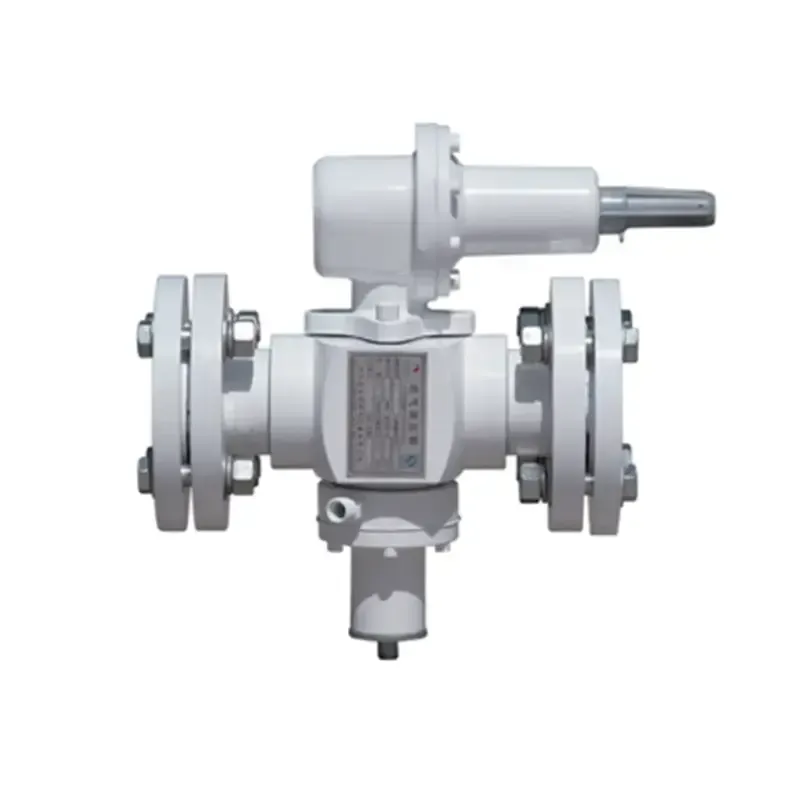
Oct . 17, 2024 16:13
Back to list
Natural Gas Pressure Reduction System and Its Applications in Energy Management
Natural Gas Pressure Reducers An Essential Component in Gas Distribution Systems
Natural gas is an energy source that is increasingly being utilized worldwide due to its efficiency and relatively lower environmental impact compared to other fossil fuels. However, the safe and effective delivery of natural gas to end-users requires sophisticated systems and equipment, one of which is the natural gas pressure reducer. This article explores the role, types, and functioning of gas pressure reducers in natural gas distribution systems.
What is a Natural Gas Pressure Reducer?
A natural gas pressure reducer, also known as a pressure regulator, is a device that reduces the high-pressure flow of natural gas from a source, such as a pipeline or tank, to a lower, more manageable pressure suitable for use in heating systems, appliances, industrial processes, and more. These devices ensure that gas is delivered at a consistent and safe pressure regardless of fluctuations in the supply side.
Importance of Pressure Regulators
1. Safety Operating appliances and systems at the correct pressure is essential for safety. High-pressure gas can lead to dangerous leaks, explosions, or equipment damage. The pressure reducer mitigates these risks by ensuring the pressure is maintained at safe levels.
2. Efficiency Regulators contribute to the efficiency of gas distribution systems. By controlling the flow of gas, they help optimize combustion processes in appliances, which can result in decreased fuel costs and lower emissions.
3. System Longevity By preventing pressure surges and fluctuations, pressure reducers protect downstream equipment from the potential damage that can be caused by inconsistent pressures. This extends the lifespan of appliances and machinery.
Types of Natural Gas Pressure Reducers
.
1. Single-Stage Regulators These are used where the required pressure drop is not too significant. They are typically employed for residential and small commercial applications.
مخفض ضغط الغاز الطبيعي

2. Two-Stage Regulators For larger applications where a more significant change in pressure is needed, two-stage regulators are more suitable. They provide greater stability and a more consistent output pressure by regulating the pressure in two stages.
3. Line Pressure Regulators These regulators are used on pipelines to control the pressure throughout a distribution network. They adjust the downstream pressure based on flow demand.
4. Dome-Loaded Regulators These use a diaphragm to maintain pressure and are commonly used in applications where precise pressure control is critical.
5. Electronic Pressure Regulators With advancements in technology, electronic regulators have emerged, offering automated control and monitoring capabilities, which improve accuracy and reliability.
How Do Natural Gas Pressure Reducers Work?
The functioning of a natural gas pressure reducer is based on a principle of balance between upstream and downstream pressures. The device has an inlet, where high-pressure gas enters, and an outlet, which releases gas at a lower, controlled pressure. Inside the regulator, a diaphragm or valve reacts to the difference in pressure.
1. Pressure Differential When gas enters the regulator, it creates a pressure difference between the inlet and outlet. If the downstream pressure rises above a set point, the diaphragm moves to close the valve, restricting gas flow until the pressure falls back to the desired level.
2. Adjustment Most regulators allow for adjustments to be made to the outlet pressure. This is done using a spring mechanism that can be calibrated to different settings based on user requirements.
3. Safety Features Many regulators incorporate safety features such as relief valves that vent excess pressure, ensuring that the system operates within safe parameters.
Conclusion
Natural gas pressure reducers are a crucial component of natural gas distribution systems, ensuring that gas is delivered safely, reliably, and efficiently. With varying types and technology advancements, these devices have become more sophisticated, enabling better control and monitoring of gas flow. As natural gas continues to play an essential role in the global energy landscape, the importance of effective pressure regulation will only increase, supporting safer and more efficient energy consumption.
Latest news
-
Safety Valve Spring-Loaded Design Overpressure ProtectionNewsJul.25,2025
-
Precision Voltage Regulator AC5 Accuracy Grade PerformanceNewsJul.25,2025
-
Natural Gas Pressure Regulating Skid Industrial Pipeline ApplicationsNewsJul.25,2025
-
Natural Gas Filter Stainless Steel Mesh Element DesignNewsJul.25,2025
-
Gas Pressure Regulator Valve Direct-Acting Spring-Loaded DesignNewsJul.25,2025
-
Decompression Equipment Multi-Stage Heat Exchange System DesignNewsJul.25,2025

